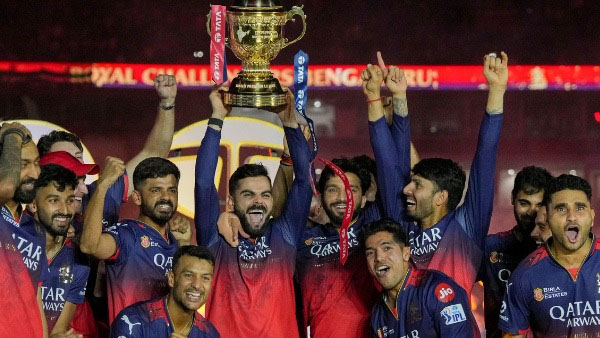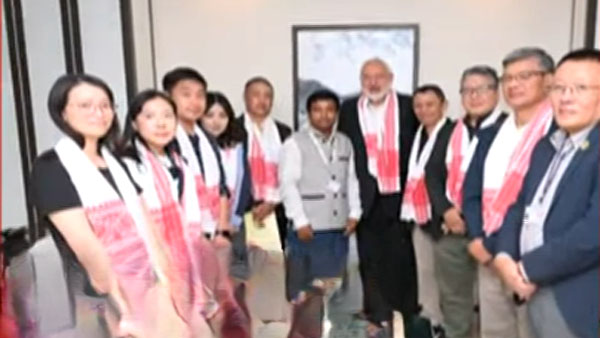By Dipak Kurmi
The euphoria of a long-awaited triumph in the Indian Premier League (IPL) turned into a harrowing tragedy on June 5, 2025, in Bengaluru, as the Royal Challengers Bangalore (RCB) celebrated their first IPL title after 18 years of anticipation. What should have been a jubilant occasion following their victory in Ahmedabad morphed into a devastating incident, claiming 11 young lives and leaving dozens with traumatic injuries around the Chinnaswamy Stadium in the heart of the city. This catastrophe, marked by a shocking failure of crowd control protocols, has cast a dark shadow over the sport’s popularity in India, exposing systemic negligence by both the state administration and the cricket team’s management. The incident underscores the dire need for accountability and reform in managing large-scale public events, especially those fueled by the frenzied passion of cricket fans.
The sequence of events leading to the tragedy began with RCB’s historic win against the Chennai Super Kings in the IPL final on June 4, 2025, in Ahmedabad, ending a drought that had persisted since the franchise’s inception in 2008. The victory, a moment of pride for Bengaluru, sparked widespread celebrations across Karnataka. However, the team’s decision to host a victory bash less than 24 hours later at the Chinnaswamy Stadium proved disastrous. The unseemly haste in organizing the event, driven by a desire to capitalize on the fans’ frenzy, left little time for proper planning or coordination with local authorities. This lack of preparation became evident as thousands of fans descended upon the stadium, far exceeding the venue’s capacity to manage such a crowd safely.
The state government, often eager to associate with cricketing triumphs due to the sport’s immense popularity, failed miserably in ensuring the event’s safety. Politicians across party lines, who typically revel in the limelight of sporting successes, were complicit in allowing the celebration to proceed without adequate arrangements. The felicitation of the RCB players at the state legislature complex earlier that day further highlighted the government’s involvement, yet no measures were taken to secure the stadium or its surroundings with sufficient police presence or standard crowd control protocols. The Karnataka High Court, in a suo motu hearing following the tragedy, witnessed a shameful passing of the buck between the state administration and the cricket team, with neither accepting full responsibility for the oversight.
Several factors contributed to the chaos that unfolded. At multiple entrances to the stadium, stampedes erupted, triggered by a combination of poor infrastructure and crowd mismanagement. Reports suggest that the collapse of a temporary slab placed over a drain near one of the gates may have initiated the panic, while overenthusiastic young fans, particularly girls, rushed toward entrances amid rumors of gates being opened. The pushing and shoving that ensued exacerbated the situation, leading to the fatal crush. However, the root cause lies in the city’s ill-preparedness to host such an event. Bengaluru’s administration was caught off guard by the scale of the fan turnout, with an unmanageable crowd gathering in a relatively small area disproportionate to the numbers. The absence of basic security measures, such as barricades to regulate inflows, and the failure of police intelligence to anticipate the crowd’s response, point to gross negligence on the part of those responsible for public safety.
Crowd control, a critical aspect of managing large public events, falls squarely under the purview of the state administration and the metropolitan police, not a cricket club, no matter how popular. RCB, a franchise owned by a liquor-manufacturing company, cannot be expected to handle law and order responsibilities, yet their overzealousness in hosting the event without ensuring proper coordination with authorities stands exposed. The police, tasked with managing traffic, maintaining order, and ensuring safety, were woefully underprepared. In the 17 previous IPL seasons, victory celebrations had been well-planned and executed with adequate time for preparation, avoiding such untoward incidents. The haste in this instance, however, proved fatal, highlighting a stark contrast with past successes in event management.
Adding fuel to public outrage was the insensitivity displayed during the tragedy. While fans suffered outside the stadium, enduring the crush and subsequent stampedes, the celebrations inside continued unhindered. Karnataka’s Deputy Chief Minister later claimed that those inside were unaware of the chaos unfolding outside, seeking the benefit of the doubt for the players and organizers. However, this explanation has done little to assuage the anger of a grieving public, who view the continuation of festivities amid such a crisis as a profound lack of empathy. The scale of the tragedy—11 lives lost and dozens injured—demands strict accountability. Those in charge of Bengaluru’s metropolitan police, responsible for law and order and traffic management, must face consequences for their failure to anticipate and mitigate the risks of such a large gathering.
The role of the RCB team and its multimillionaire players has also come under scrutiny. While no amount of money can compensate for the loss of lives, the absence of a noble gesture from the team has been glaring. Cricket, often hailed as a unifying national sport with vast resources, has a moral obligation to offer support in times of tragedy, especially when fans lose their lives in the fervor of celebrating their team’s success. A fund to support the victims’ families or contributions toward medical expenses for the injured could have demonstrated empathy, yet no such initiative has emerged, further deepening public disillusionment. Social media platforms like X have been abuzz with criticism, with users questioning why players, whose earnings run into crores, have not stepped forward to provide “salvation” in this tragic situation.
The Bengaluru tragedy is not an isolated incident in the context of global sports events but serves as a stark reminder of the risks associated with mismanaged celebrations. In 2010, a stampede at a football match in Ivory Coast killed 19 people due to inadequate crowd control, a parallel that underscores the universal need for robust safety protocols. In India, where cricket evokes unparalleled passion, the stakes are even higher. The 2011 World Cup victory celebrations in Mumbai, while chaotic, were managed without fatalities due to extensive planning and police deployment. The contrast with Bengaluru’s IPL celebration highlights the critical importance of preparation and coordination in handling large crowds.
This incident must serve as a wake-up call for both state governments and sports franchises across India. The Karnataka government’s failure to regulate a public event, even if organized by a cricket club under the state cricket association, raises questions about its responsibility to ensure public safety. Future events must be subject to stricter oversight, with mandatory crowd management plans, adequate police deployment, and infrastructure assessments. The BCCI, which oversees the IPL, should also consider implementing guidelines for post-match celebrations, ensuring that franchises coordinate with local authorities to prevent such tragedies.
As Bengaluru mourns the loss of 11 young lives, the city and the nation grapple with the bitter irony of a victory turned tragic. The joy of RCB’s long-awaited IPL triumph has been overshadowed by the pain of families who lost loved ones and the trauma of those injured in the stampedes. This tragedy, born out of negligence and haste, demands introspection and reform. Accountability must be enforced, from the top echelons of the police to the organizers who prioritized celebration over safety. Cricket, a sport that unites millions, must also rise to the occasion, offering compassion and support to those affected. Only through such measures can India ensure that future victories are celebrated with joy, not marred by sorrow, safeguarding the lives of the fans who make the sport what it is.
(the writer can be reached at dipakkurmiglpltd@gmail.com)




